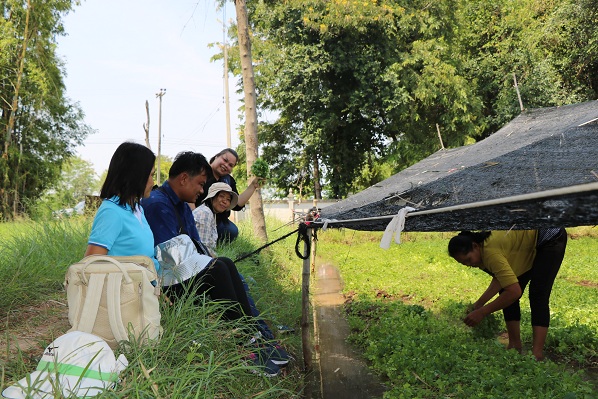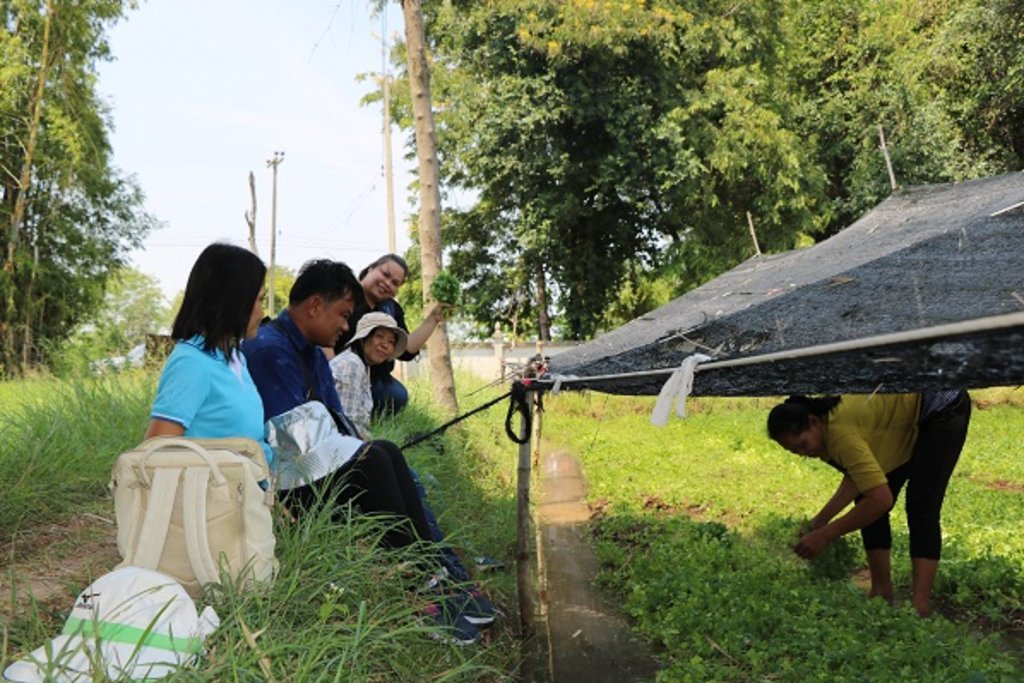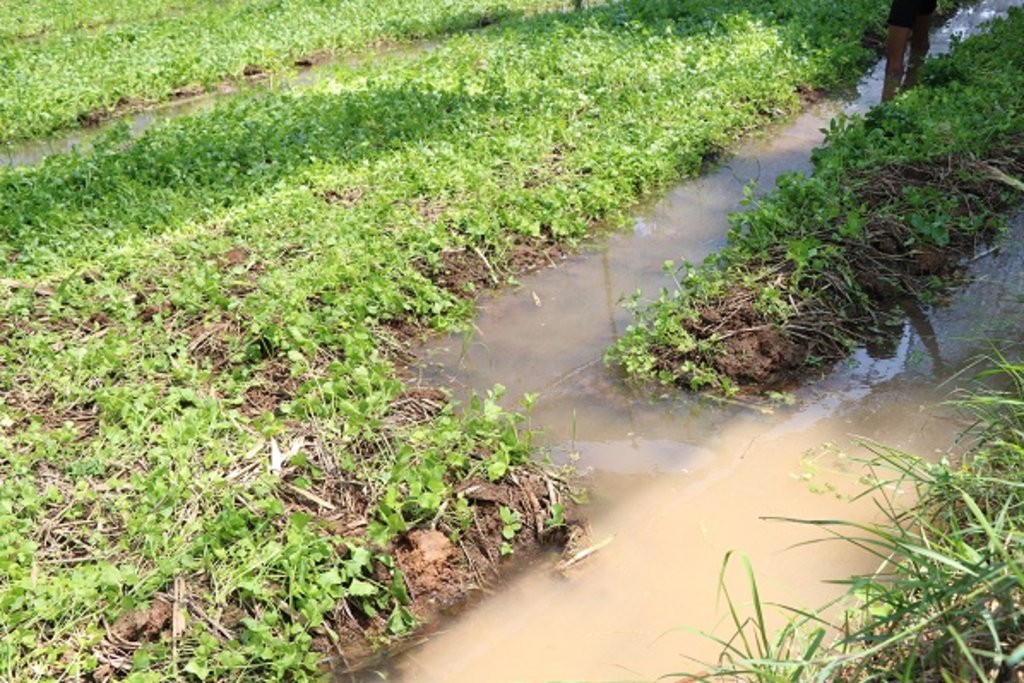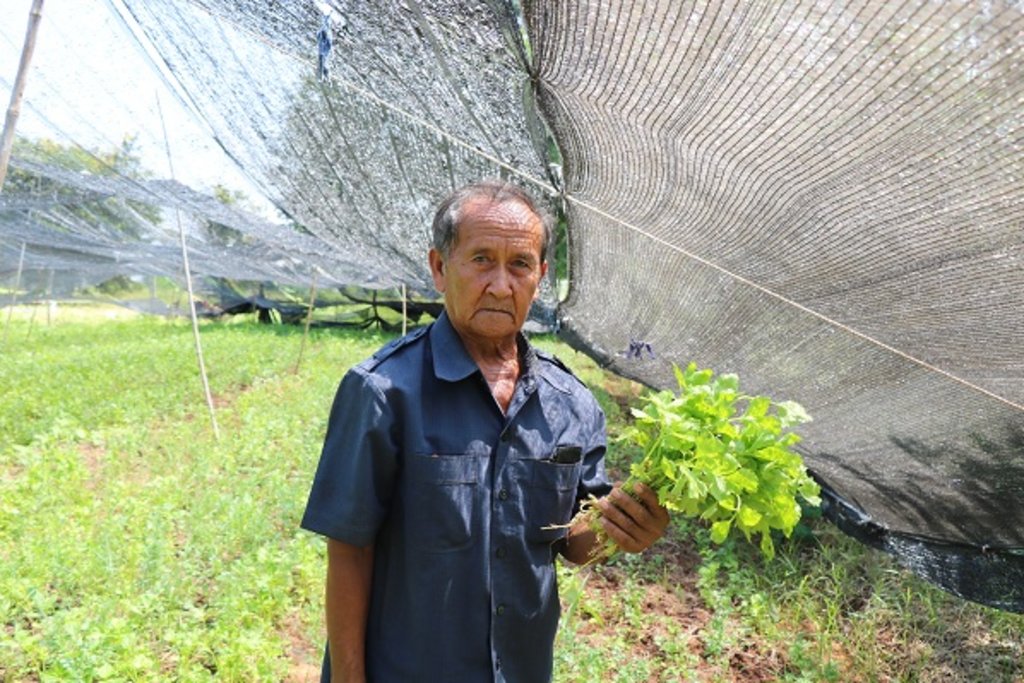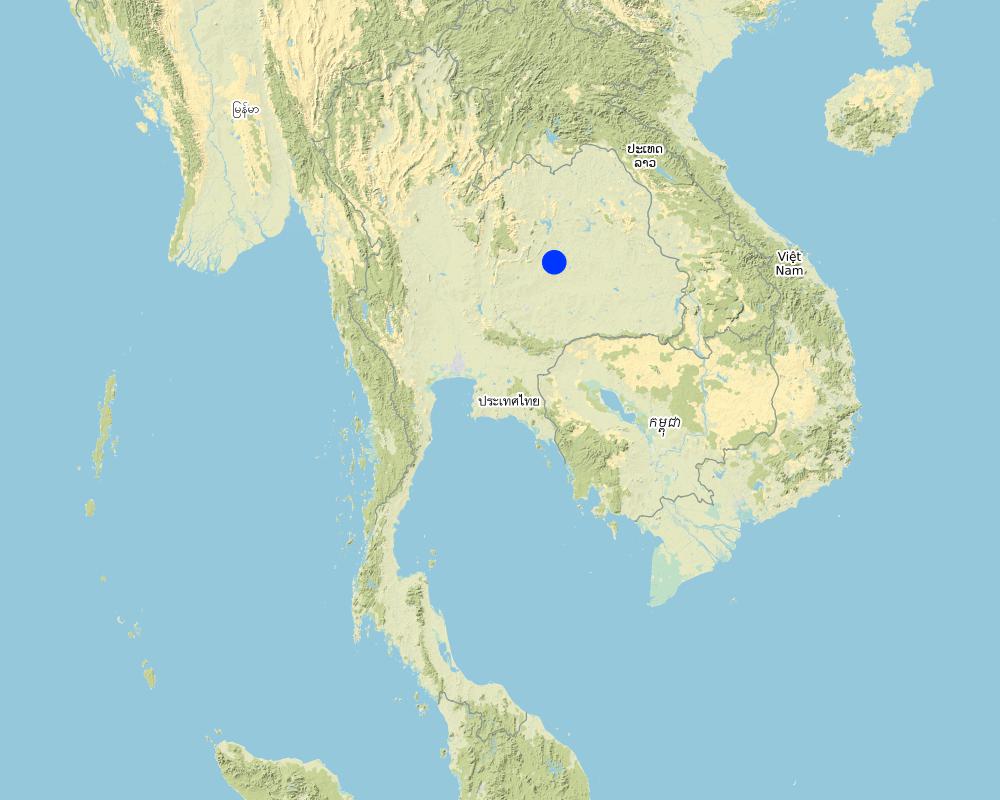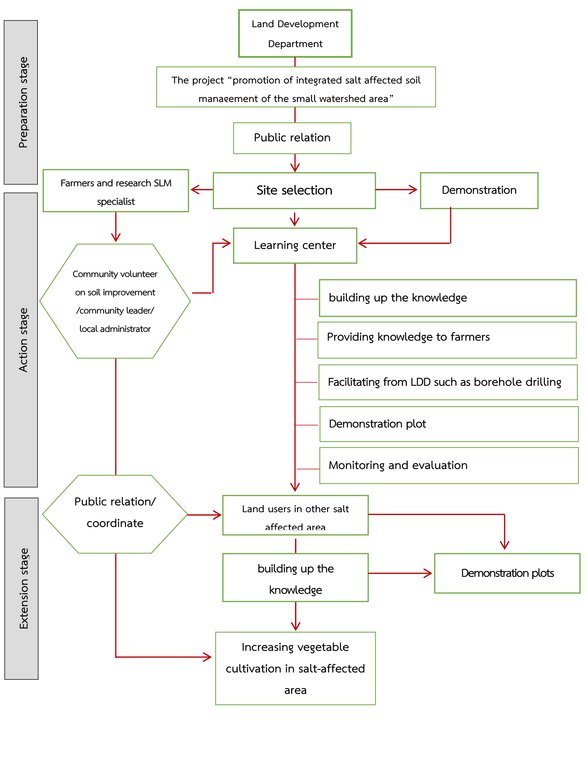Pumping groundwater for vegetable irrigation to prevent salination [泰国]
- 创建:
- 更新:
- 编制者: supranee sritumboon
- 编辑者: –
- 审查者: Rima Mekdaschi Studer, Pitayakon Limtong, William Critchley
approaches_4298 - 泰国
查看章节
全部展开 全部收起1. 一般信息
1.2 参与方法评估和文件编制的资源人员和机构的联系方式
关键资源人员
Somked Boonmee
泰国
SLM专业人员:
Sihaban Pranee
pranee782@gmail.com
Land Development Department Regional Office 5
泰国
SLM专业人员:
Sritumboon Supranee
ssritumboon@yahoo.com
Land Development Department Regional Office 5
泰国
SLM专业人员:
Jakkarach Usa
usa_kl@hotmail.com
Land Development Department Regional Office 5
泰国
SLM专业人员:
Rophandung Weera
weerop@hotmail.com
Land Development Department Regional Office 5
泰国
SLM专业人员:
Phothinam Pornpana
laosuwan18@hotmail.com
Land Development Department Regional Office 5
泰国
SLM专业人员:
National Consultant:
Arunin Somsri
ssarunin@gmail.com
Land Development Department
泰国
有助于对方法进行记录/评估的项目名称(如相关)
Decision Support for Mainstreaming and Scaling out Sustainable Land Management (GEF-FAO / DS-SLM)有助于对方法进行记录/评估的项目名称(如相关)
Book project: where people and their land are safer - A Compendium of Good Practices in Disaster Risk Reduction (DRR) (where people and their land are safer)有助于对方法进行记录/评估的项目名称(如相关)
Book project: where the land is greener - Case Studies and Analysis of Soil and Water Conservation Initiatives Worldwide (where the land is greener)有助于对方法进行记录/评估的机构名称(如相关)
Land Development Department LDD (Land Development Department LDD) - 泰国1.3 关于使用通过WOCAT记录的数据的条件
编制者和关键资源人员接受有关使用通过WOCAT记录数据的条件。:
是
2. SLM方法的描述
2.1 该方法的简要说明
The approach is to develop a simple groundwater pumping model for irrigation, on the basis of cooperation and knowledge sharing between government agencies and farmers, that addresses the risk and prevention of off-site salination.
2.2 该方法的详细说明
该方法的详细说明:
The objective of groundwater pumping for irrigation is to lower the groundwater level in the recharge zone which in turn decreases soil salinity lower down in the discharge area. The extension and promotion of the approach has been done through the learning and training center. The goal is better understanding and public awareness of preventive measure against salinity, through the use of salt-tolerant crops, combined with mechanical measures of accessing groundwater for irrigation. This has been achieved in close cooperation among researchers, SLM specialists, local administration, and community volunteers on soil improvement. A group of farmers started this activity in 1996 under the Land Development Department (LDD)’s Project on Promotion of Integrated Salt-Affected Soil Management of Small Watershed Areas. The approach aims at scaling-out the model to farmers in the recharge areas with the objectives of sharing benefits that are to (a) persuade other land users to change their land use from rice which is a high water-use crop to low water-use crops such as vegetables, (b) prevent further off-site salination, (c) increase land users’ income, and (d) provide knowledge about integrated salinity management. Researchers and SLM specialists work closely with farmers in monitoring and evaluating the recharge area to prevent extensive salination in the discharge zone - as well as the use of groundwater for irrigation. This plan has been formulated to stimulate further promotion and extension to other areas with a similar environment, through training and public relations. The four stages were: first, the expert and agriculturalist of the LDD’s Regional Office 5 (LDDRO5) cooperated with the volunteer soil doctor and farmers in the community to design and plan the project; second, the officers of LDDRO5 set up a forum for exchange of knowledge and experiences between farmers who have been successful in producing vegetables through using shallow groundwater for agriculture, and are not affected by a salinity. Thirdly, the officers of LDDRO5 collaborated with the government office in the district to train farmers who had an interest in vegetable production. Fourthly, LDDRO5 created incentives for farmers to change areas that are not suitable for planting paddy rice to grow vegetables by supporting shallow groundwater well through pumping with solar energy. The stakeholders include the LDD, SLM specialists and researchers, local administrators, and community volunteers on soil improvement and land users. Land users like the project activities because they receive higher incomes – partially because they do not lose land to digging ponds, but instead irrigate from these deep wells from which they can irrigate all year round. The LDD has supported borehole drilling wells – but farmers are not so happy when they have to wait for over a year to get LDD’s borehole drilling due to budget limitations.
2.3 该方法的照片
2.4 该方法的视频
日期:
02/10/2018
位置:
Ban Kaonoi
摄影师的名字:
Supranee Sritumboon
2.5 采用该方法的国家/地区/地点
国家:
泰国
区域/州/省:
Khon Kaen
有关地点的进一步说明:
Ban Kaonoi
Map
×2.6 该方法的开始和终止日期
注明开始年份:
2007
若不知道准确的年份,请注明该方法的大致开始日期。:
10-50年前
2.7 方法的类型
- 基于项目/方案
2.8 该方法的主要目的/目标
The objectives of the approach are to persuade land users in the recharge zone to change their land use to low-water use such as vegetable cultivation, to prevent further off-site salination, to increase land users’ income and provide knowledge of integrated salinity management.
2.9 推动或妨碍实施本办法所适用的技术的条件
社会/文化/宗教规范和价值观
- 启动
Farmers' community
财务资源和服务的可用性/可得性
- 启动
Farmers get higher income from vegetables.
参与者的的协作/协调
- 启动
Researchers, SLM specialists and farmers are working together to implement the project.
了解SLM,获得技术支持
- 启动
Provide knowledge of integrated salinity management to farmers.
市场(购买投入,销售产品)和价格
- 启动
Farmers can produce plants according to market demand.
3. 相关利益相关者的参与和角色
3.1 该方法涉及的利益相关者及其职责
- 当地土地使用者/当地社区
Farmers
Vegetable cultivation
- SLM专家/农业顾问
Government officers
Support knowledge and technology
- 地方政府
Subdistrict Administration Organization
Support information
- community volunteer on soil
Community volunteers on soil and successful farmers
Share knowledge and experience
如果涉及多个利益相关者,请注明领导机构:
Land Development Department Regional Office 5
3.2 当地土地使用者/当地社区参与该方法的不同阶段
| 当地土地使用者/当地社区的参与 | 指定参与人员并描述活动 | |
|---|---|---|
| 启动/动机 | 互动 | Farmers had developed knowledge and technology by themselves |
| 计划 | 自我动员 | Cultivation planning by farmers |
| 实施 | 互动 | Farmers had implemented by themselves and were supported by the government |
| 监测/评估 | 互动 | The government officers are monitoring and evaluating after the project was implemented |
3.3 流程图(如可用)
3.4 有关SLM技术选择的决策
具体说明谁有权决定选择要实施的技术:
- 仅限土地使用者(自主)
明确做出决策的依据:
- 个人经验和意见(无记录)
4. 技术支持、能力建设和知识管理
4.1 能力建设/培训
是否为土地使用者/其他利益相关者提供培训?:
是
明确受训人员:
- 土地使用者
培训形式:
- 农民对农民
涵盖的主题:
Promotion of integrated salt-affected soil management of the small watershed area.
注释:
The topic covered vegetable production and salt-affected soil management.
4.2 咨询服务
土地使用者有权使用咨询服务吗?:
否
4.3 机构强化(组织发展)
是否通过这种方法建立或加强了机构?:
- 是,非常
具体说明机构的强化或建立程度:
- 本地
说明机构、角色和职责、成员等。:
The learning and transferring center of land development technology was set up in the community to be used as a training facility, meeting, discussion, and sharing knowledge among farmers and officials.
具体说明支持类型:
- 能力建设/培训
4.4 监测和评估
监测和评估是该方法的一部分吗?:
是
注释:
Government officers, community volunteers on soil improvement and farmers.
若是,该文件是否用于监测和评估?:
是
4.5 研究
研究是该方法的一部分吗?
否
5. 融资和外部物质支持
5.1 该方法中SLM组成部分的年度预算
如果不知道准确的年度预算,请给出一个范围:
- 10,000-100,000
5.2 为土地使用者提供财政/物质支援
土地使用者是否获得实施该技术的财政/物质支持?:
否
5.3 对特定投入的补贴(包括劳动力)
- 设备
| 具体说明哪些投入得到了补贴 | 程度如何 | 对补贴做出具体说明 |
|---|---|---|
| 工具 | 部分融资 | Land Development Department Regional Office 5 supported water pump using solar energy. |
如果土地使用者的劳动力是一项重要的投入,那么是不是:
- 以现金支付
5.4 信用
是否根据SLM活动的方法给予信用值?:
否
5.5 其它激励或手段
是否有其他激励措施或工具用于促进SLM技术的实施?:
否
6. 影响分析和结论性陈述
6.1 方法的影响
该方法是否有助于当地土地使用者,提高利益相关者的参与度?:
- 否
- 是,很少
- 是,中等
- 是,支持力度很大
Cooperation between the government and farmers.
该方法是否帮助土地使用者实施和维护SLM技术?:
- 否
- 是,很少
- 是,中等
- 是,支持力度很大
Farmers have a better understanding of the technology and willing to maintain it due to the good result.
该方法是否提高了土地使用者实施土地管理的知识和能力?:
- 否
- 是,很少
- 是,中等
- 是,支持力度很大
Farmers have adopted the technology to suit their own area.
该方法是否提高了其他利益相关者的知识和能力?:
- 否
- 是,很少
- 是,中等
- 是,支持力度很大
The approach presented the efficient technology to develop salination for the stakeholders.
该方法是否改善了粮食安全/改善了营养?:
- 否
- 是,很少
- 是,中等
- 是,支持力度很大
Different types of vegetables leads to better food security.
该方法是否改善了市场准入?:
- 否
- 是,很少
- 是,中等
- 是,支持力度很大
Higher productivity draws merchants into the project area.
该方法是否会带来就业、收入机会?:
- 否
- 是,很少
- 是,中等
- 是,支持力度很大
The higher productivity and the wider area used for such technology cause more labour demand resulting in higher employment of people in the area.
6.2 土地使用者实施SLM的主要动机
- 增加生产
Increase variety of product in the area
- 减少土地退化
Decrease salt distribution in soil
6.3 方法活动的可持续性
土地使用者能否维持通过该方法实施的措施(无外部支持的情况下)?:
- 是
若是,请说明如何维持:
Farmers have a better understanding of off-site salination and they can develop the technology by themselves.
6.4 该方法的长处/优点
| 土地使用者眼中的长处/优势/机会 |
|---|
| Farmers get higher income from vegetable cultivation. |
| Land users have water to use for agriculture all year round. |
| 编制者或其他关键资源人员认为的长处/优势/机会 |
|---|
| Increase the varieties of agricultural products. |
| Lower the groundwater level and control the salinity that might spread toward the discharge area. |
6.5 该方法的弱点/缺点以及克服它们的方法
| 土地使用者认为的弱点/缺点/风险 | 如何克服它们? |
|---|---|
| Farmers wait for more than one year to get help from LDD for borehole drilling due to limited budget. | Increase more government budget or farmers have to invest by themselves. |
| 编制者或其他关键资源人员认为的弱点/缺点/风险 | 如何克服它们? |
|---|---|
| High initial implementation cost if the farmers do not receive government support. | Farmers have to search for funds to invest by themselves. |
7. 参考和链接
7.1 方法/信息来源
- 实地考察、实地调查
Visit two land user's fields
- 与土地使用者的访谈
Interview with one farmer
- 与SLM专业人员/专家的访谈
A Land Development Department officer
7.2 参考可用出版物
标题、作者、年份、ISBN:
Land Development Department
可以从哪里获得?成本如何?
http://www.ldd.go.th/
7.3 链接到网络上可用的相关信息
标题/说明:
where the land is greener - Case Studies and Analysis of Soil and Water Conservation Initiatives Worldwide
URL:
https://www.wocat.net/library/media/27/
标题/说明:
where people and their land are safer - A Compendium of Good Practices in Disaster Risk Reduction (DRR) (where people and their land are safer) URL:
URL:
https://www.wocat.net/en/projects-and-countries/projects/drr
链接和模块
全部展开 全部收起链接
无链接
模块
无模块


